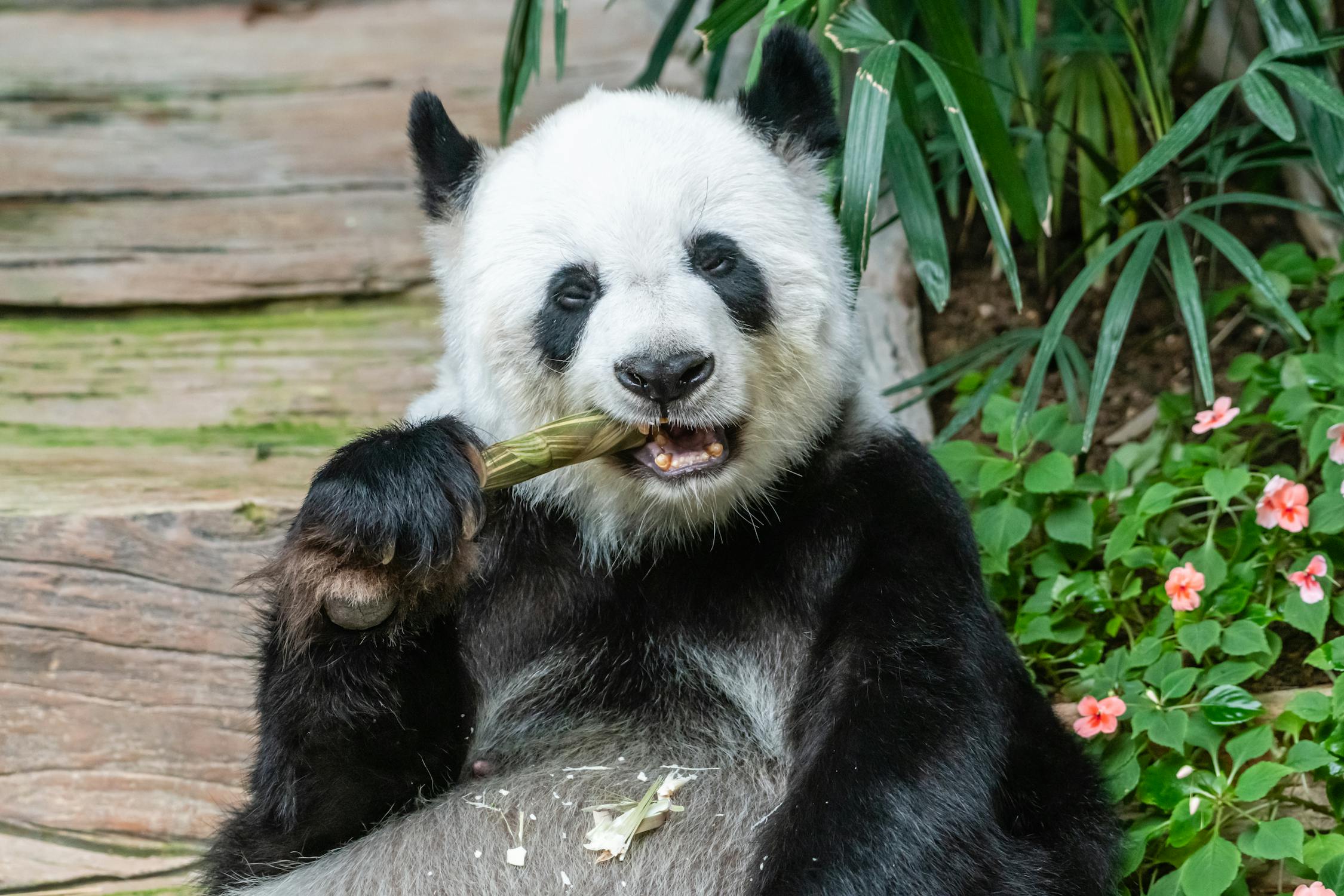Facts about the giant panda

Native to the mountainous forests of southwest China, the giant panda is one of the most beloved animals in the world.
The giant panda is recognized by its distinctive colors of black and white.
Their ears, masks, eyes, shoulders, and legs are black, while the rest of their bodies are white. Their thick fur keeps them warm in the cold, damp mountainous areas.
When a giant panda is on all fours, its average height ranges from 60-100 cm (2-3 feet) at the shoulder and between 1-2 meters (4-6 feet). They can weigh between 100 and 115 kg (220 and 250 pounds), with males being larger than females.
One interesting evolutionary trait of the panda is the prominent wristbone that functions like a thumb. This helps the panda grip the bamboo while chewing it with its strong teeth.
What does the giant panda eat?
Bamboo makes up almost the entire diet of the panda. Due to the low nutritional value of bamboo, pandas need to consume 10-20 kg (20-40 pounds) daily. Sometimes, pandas eat other available foods, including small rodents, eggs, fish, and other plants.
Bamboo provides a good amount of water, but pandas need to supplement this quantity with fresh water daily.
The reproduction of the giant panda.
When pandas reach the age of 4 to 8 years, they reach maturity and can reproduce. However, a female panda can only conceive for 2-3 days each spring!
In this small time window, male and female pandas find each other through scents and calls similar to those of goats or sheep. They do not roar like other bears.
Between 95 and 160 days of pregnancy, a female panda will give birth,the newborn cub is blind, hairless, small in size, and weighs only 85-140 grams (3-5 ounces), completely helpless, and the child cannot move much on its own for about 3 months. In contrast, the mother is very cautious and attentive in taking care of her child child during this time.
Presence and extinction

With around 2060 pandas living in the wild, the giant panda is considered endangered according to the International Union for Conservation of Nature’s Red List. Given that pandas reproduce infrequently, it is very difficult for their population to recover from such a low point.
One of the main reasons for the decline in panda numbers is habitat destruction. As the population in China continues to grow, development has encroached on the panda’s habitat, pushing them into smaller and less suitable living areas. The destruction of habitats also leads to a food shortage.
Pandas feed on several types of bamboo that bloom at different times of the year. If one type of bamboo is destroyed during its growth, it may leave the panda with nothing to eat during the time it naturally thrives, increasing the risk of famine.
To combat this issue, the Chinese government has actively worked on restoring and protecting bamboo habitats, and these measures have shown positive results.
The surveys conducted by the government forestry administration concluded that the number of pandas has increased since the measures taken by the Chinese government. In 2016, the International Union for Conservation of Nature upgraded the status of the giant panda from endangered to vulnerable.
While the increasing numbers of pandas is good news at the moment, climate change is expected to eliminate more than 35% of the panda’s bamboo habitat over the next 80 years.
Wildlife reserves have been established in parts of China to ensure that pandas have a home, and efforts are being made to ensure their survival in the wild. Researchers continue to study how pandas reproduce in an effort to increase their population. You can help by donating or adopting a panda through the World Wildlife Fund.

Approximately 2,060 giant pandas live in the mountainous forests of southwestern China.




